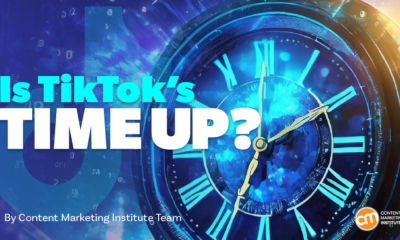Most B2B marketing organizations today practice some kind of account-based marketing (ABM) strategy. At its most basic, that means investing marketing and sales resources in guiding high value accounts through the journey to conversion. There are a range of ABM technology solutions available to support this strategy, but selecting and implementing one can be a fraught and expensive process.
Once you’ve gone through the checklist to determine if you need — and are ready for — an ABM solution, the next step is to identify and contact vendors.
Your vendor shortlist. Make a list of all the ABM capabilities you currently have, those that you would like to have and those that you can’t live without. This last category is critical, and will help you avoid making a costly mistake. For example, if enriching your ICPs with deeper technographic data is important, be sure to ask about it during vendor interviews and demos. If you find that one vendor doesn’t offer this “must-have” capability, it’s obviously not a fit.
Take your list of capabilities and then do some research. Speak to your marketing peers to find out who is using which ABM tool and why. Narrow your list down to those vendors that meet your criteria. Submit your list of the ABM capabilities you’ve identified, and set a timeframe for them to reply. Decide whether or not you need to engage in a formal RFI/RFP process. The most effective RFPs only request relevant information and provide ample information about your brand and its ABM needs.
Questions to ask at the demo. Not all the questions on this list will be relevant to your business needs; most will be. But the important thing is to be properly prepared with a comprehensive list of questions prior to the demo. These are our suggestions:
- How easy is the tool to use?
- Does the vendor seem to understand our business and our marketing needs?
- Are they showing us our “must-have” features?
- Does the tool help identify target accounts?
- What type of machine learning and/or artificial intelligence does the tool use?
- Can we segment and view accounts by multiple criteria?
- Can the tool match existing and new leads to their correct accounts?
- Can the tool identify anonymous leads and match them to their correct accounts?
- Does the tool show where visitors came from (channel or campaign)?
- Does the tool track website visitor actions (i.e., clicks and content views)?
- Can the tool track visitor actions across all visits?
- Can we manage cross-channel campaigns (in all of our relevant channels) through the tool?
- Does the tool help us comply with relevant privacy regulations?
- Does the tool provide real-time analytics?
- Does the tool provide summary and/or detailed views of account data and insights?
- Does the tool measure account engagement? How?
- Are native integrations with our CRM and/or marketing automation platform available, so we can utilize historical data?
- If not, is an API available for custom system integrations?
- How much training will we need to use the software, and what kind of training is available?
- What level of customer support is offered, and when is it available (i.e., 24/7 vs. 8/5)?
- What is the turnaround time for support queries/tickets?
- Are professional services or support available for our transition to ABM?
- What new features are under consideration?
- What are the long-term product roadmap and launch dates?
Questions to ask the vendors’ customers. Of course, even the most honest vendor will lean towards giving you the answers you want to hear. That’s why it’s important to ask for customer references. Ideally, the vendor should be able to produce two or three customers with businesses similar to your own (if they don’t have any such customers, that’s a red light).
The conversation with the customer reference probably won’t need to be as detailed as the conversation with the vendor, but here are our tips for questions to ask:
- Why did you move to an ABM tool?
- Why did you select this tool over others?
- Has this tool lived up to your expectations?
- How long did the system take to implement?
- Who was involved in the implementation?
- Are you also using additional tools for account data, competitive intelligence, predictive analytics or event management?
- Were there any surprises that you wish you’d known about beforehand?
- Where have you seen the most success? The biggest challenges?
- How are you measuring your own success?
- How easy was the set-up process and how long? Did the vendor help?
- How responsive is customer service?
- Has there been any down time?
- What is the most useful, actionable (favorite) report the solution generates?
- What do you wish they did differently?
- Why would you recommend this tool?
Get the Marketing Intelligence Report. Much more advice, including information about an extensive range of vendors, is available in our MIR, “Enterprise Account-Based Marketing Platforms: A Marketer’s Guide.” It’s available for free download here.
Account-based marketing: A snapshot
What it is. Account-based marketing, or ABM, is a B2B marketing strategy that aligns sales and marketing efforts to focus on high-value accounts.
This customer acquisition strategy focuses on delivering promotions — advertising, direct mail, content syndication, etc. — to targeted accounts. Individuals who may be involved in the purchase decision are targeted in a variety of ways, in order to soften the earth for the sales organization.
Why it’s hot. Account-based marketing addresses changes in B2B buyer behavior. Buyers now do extensive online research before contacting sales, a trend that has accelerated during the COVID-19 pandemic. One of marketing’s tasks in an ABM strategy is to make certain its company’s message is reaching potential customers while they are doing their research.
Why we care. Account engagement, win rate, average deal size, and ROI increase after implementing account-based marketing, according to a recent Forrester/SiriusDecisions survey. While B2B marketers benefit from that win rate, ABM vendors are also reaping the benefits as B2B marketers invest in these technologies and apply them to their channels.
Read next: What is ABM and why are B2B marketers so bullish on it?












![YouTube Ad Specs, Sizes, and Examples [2024 Update] YouTube Ad Specs, Sizes, and Examples](https://articles.entireweb.com/wp-content/uploads/2024/06/YouTube-Ad-Specs-Sizes-and-Examples.jpg)















You must be logged in to post a comment Login